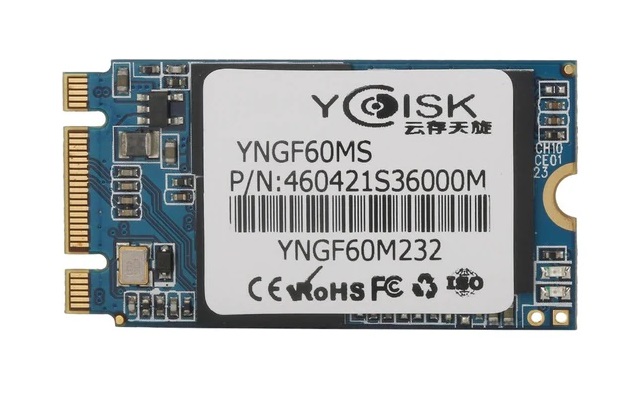Last Updated on Sunday, December 9, 2018 by
Storage technology has really gone very far in few past decades. From the storage device of few MBs that could fit in the room to devices of few TB storage space that can fit in your palm, it is a long way. With the innovation, it is possible to fit in TBs of storage in the small laptops and handheld devices. Latest SSDs are available in the normal 2.5-inch form factor while an even latest solution is M.2 SSD. M.2 form factor brings the size of a solid-state drive (SSD) in the size of a USB stick. It is latest data transfer interface that could easily revolutionize the consumer market. M.2 SSD pros and cons are though something to consider.
While the older storage devices are disappearing, so are the ports for them in the Mother Board. M.2 SSD is an SSD in USB type form factor. It has some different connector pins that require the Mother Board to have support to. Without the M.2 SSD port in the Mother Board, it absolutely is of no use to you.
Pros and Cons of M.2 SSD
The pros and cons of the M.2 SSD might not be different from the SSD, but it is definitely different in many other senses.

Pros of M.2 SSD
- Fast: If you have ever switched to SSD from the HDD, then you might have felt the difference. M.2 SSDs are designed to work with PCIe connector which has far more capability than the SATA connectors. That provides you speed even more than the traditional SATA SSDs.
- Form Factor: With the form factor like a USB stick, it will definitely save up a lot of space in the system. This will help in making the system even compact and light. The weight of SSD too is reduced from 50g to around 7g through M.2 drives.
- Future technology: Whether you like it or not, the newest storage technology is to stay as the future technology. All three innovations, M.2, PCIe and NVME are expected to be the market dominator in the future. With the change in connection ports, it opens up a new dimension for the Mother Board manufacturers to implement. Many bigger manufacturers like Samsung, Intel and few others seem interested in the production.
- Reliability: It is just as reliable as the other SSD. It doesn’t have any movable parts like in HDD. M.2 SSD’s work in exact same way like 2.5-inch SSDs, so the long-term risk and their reliability is well known unlike any other new technologies.
Also Read: SSD Pros and Cons
Cons of M.2 SSD
- Compatibility issue: 2 drive comes in different configurations. M.2 connectors only support certain ‘keys’, so finding the one that fits in your Mother Board might be a tough task. Before buying the drive, you might need to check the compatibility of M.2 drive with your Mother Board.
- Price: Buying an SSD is expensive on its own. The cost per GB of a M.2 SSD is even costlier. If you are about to buy an M.2 SSD, you would better check your system first for any bottle-neck in speed. It is a costlier choice to switch to the M.2 SSD so you need to think before buying.
- More to come: If you are the one thinking that M.2 might be the one to stay only option for storage, then you need to wait. M.2 drive has only recently become reasonable for the upper end of the market, so waiting for few more times might introduce you to the faster alternative.
- Mother Board issue: Some Mother Boards have issue with the M.2 drive. When you use the M.2 drive, some Mother Board will make SATA ports unusable. If this is the case with you, running make storage option side by side might not be possible.
Conclusion
So, as a conclusion, the M.2 drive is a costlier alternative for the storage option. It might be faster if you are switching right from the HDD. But with technologies like M.2, SSD, NVME and SATA, the one that will fit your expectation and price is hard to find. You need to take good attention to your needs because these aren’t the cheap alternative. These are the few valued M.2 SSD pros and cons, its you to decide whether or not to switch.

Pingback: Pros and Cons